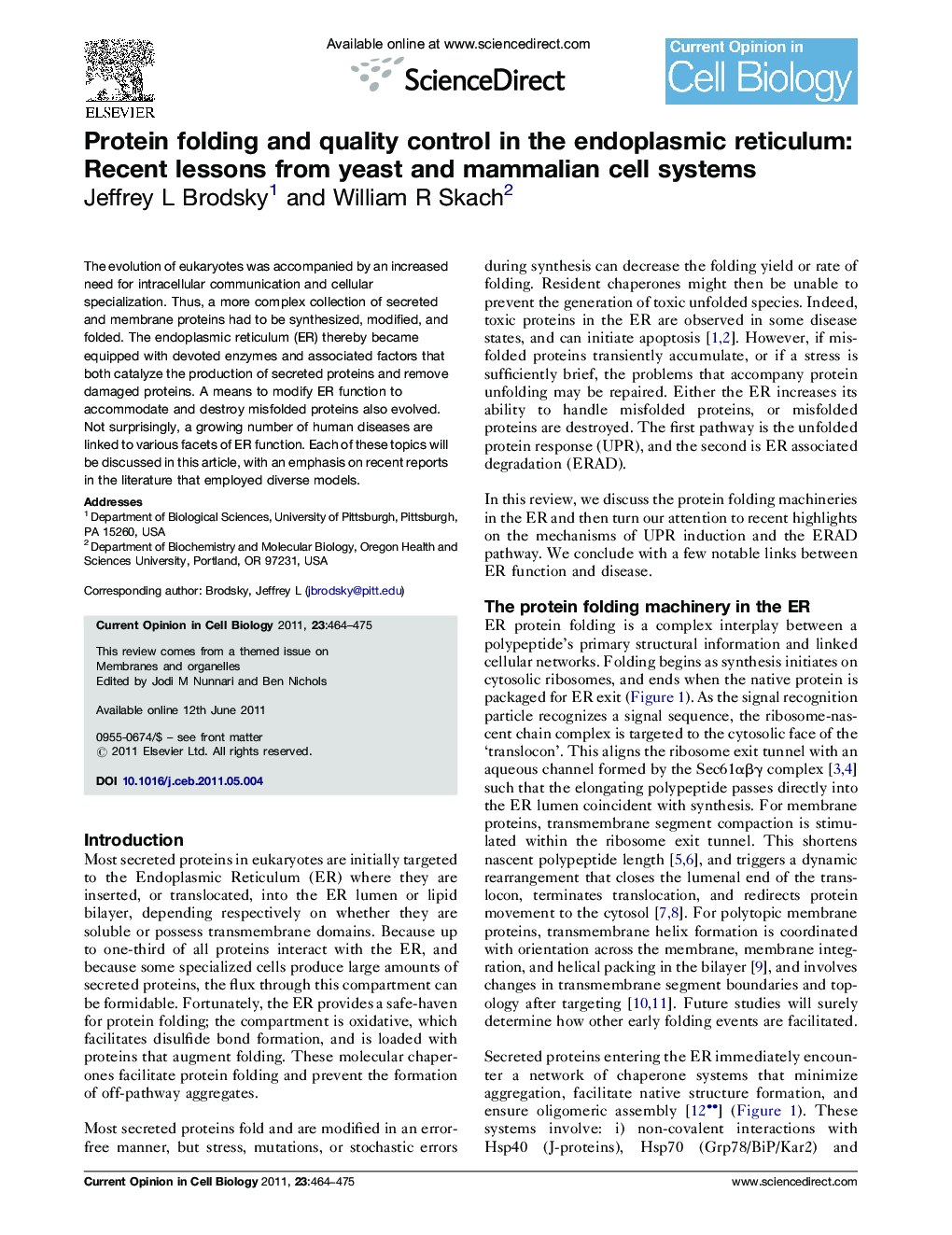| Article ID | Journal | Published Year | Pages | File Type |
|---|---|---|---|---|
| 2169892 | Current Opinion in Cell Biology | 2011 | 12 Pages |
The evolution of eukaryotes was accompanied by an increased need for intracellular communication and cellular specialization. Thus, a more complex collection of secreted and membrane proteins had to be synthesized, modified, and folded. The endoplasmic reticulum (ER) thereby became equipped with devoted enzymes and associated factors that both catalyze the production of secreted proteins and remove damaged proteins. A means to modify ER function to accommodate and destroy misfolded proteins also evolved. Not surprisingly, a growing number of human diseases are linked to various facets of ER function. Each of these topics will be discussed in this article, with an emphasis on recent reports in the literature that employed diverse models.
► Secreted proteins mature in the endoplasmic reticulum (ER) with the help of factors that catalyze folding and post-translational modifications. ► Secreted proteins may misfold or may be poorly processed; if these species accumulate the unfolded protein response (UPR) helps moderate ER stress. ► Misfolded proteins can be transported into the cytoplasm, where they are destroyed by a process known as ER associated degradation (ERAD) ► Many diseases are linked to defects in ER function, and to the UPR and ERAD pathways.
